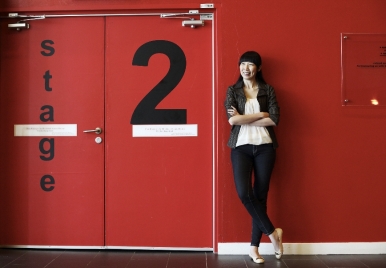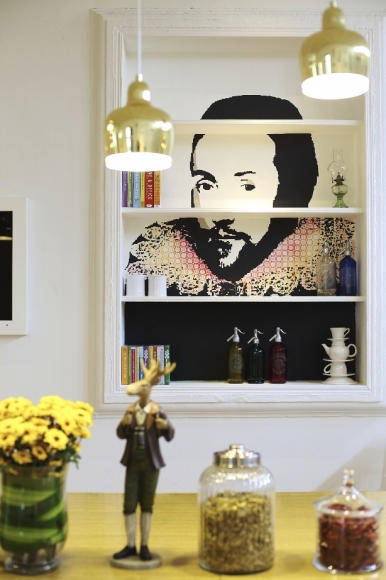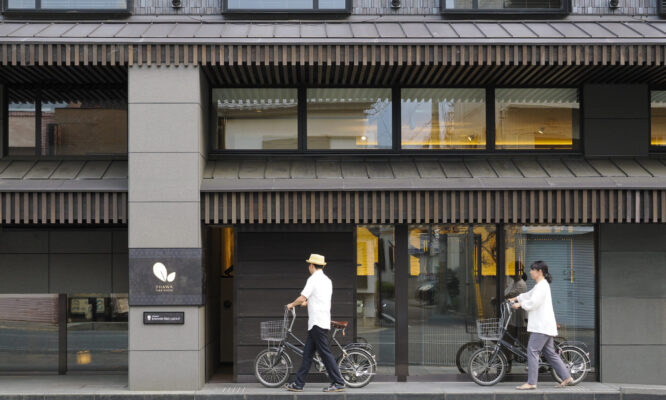Hip young artists, new galleries and a sparkling festival are revolutionising the arts scene in George Town, Penang

George Town is getting its groove back. The city that the intrepid Victorian traveller, Isabella Bird, called a ‘brilliant place under a brilliant sky’, is buffing up its shine. Ever since the city was awarded UNESCO World Heritage Site status in 2008, it has spruced and dolled up to court the travelling suitor. Already renowned for food, historical buildings and an authentic sense of place, George Town is adding a lively arts scene to its already irresistible charms.
The ode to art is everywhere, on the walls, in formerly derelict buildings, even along the shady five-foot walkways. Heritage shophouses in the inner city are being reborn as cool little galleries and quirky arts-influenced cafés. Playful street art, popularised by Lithuanian artist Ernest Zacharevic, is attracting camera-toting tourists by the dozen. On any given day, there are art exhibitions, music gigs, film screenings, plays and comedy shows to lure the arts seeker.
Heralding this cultural renaissance is the young but hugely successful George Town Festival (georgetownfestival.com). The month-long arts, cultural and heritage extravaganza, led by its tireless director Joe Sidek, is instrumental in bolstering the island’s arts scene. Having counted heavyweights such as Akram Khan, Roysten Abel and Sidi Larbi Cherkaoui as participants, the festival is turning its attention to local works. Last year, arts collective Ombak showcased a contemporary dance performance called Bridges & Kaki Lima along Lebuh Victoria, free to the public. Response was enthusiastic.

“It can only happen in Penang,” says Sidek, who’s helmed the festival since its modest beginnings in 2010.
“The renaissance of the island has something to do with the energy of the earth changing. There is something magical about Penang, the spaces, George Town and the people.”
This month, Tropfest, the world’s largest short film festival, is working with the George Town Festival team to debut its South East Asian edition in the city. Tropical Malady director Apichatpong Weerasethakul is its first regional ambassador.

Penang’s artistic ties go back a long way, as the island is credited as the birthplace of modern Malaysian art in the 1930s. In its heyday, Penang was a hotbed for artists near and far before Kuala Lumpur secured its spot as the country’s arts nerve centre. The island went into remission, quietly going about its business with a handful of art societies, galleries and artists stoking the creative embers.
Then came the UNESCO listing, government support and keen entrepreneurs. Australian-born Narelle McMurtrie and her partner run the Bon Ton (bontonresort.com) and Temple Tree (templetree.com.my) resorts in Langkawi. Spotting an opportunity, McMurtrie applied her winning heritage chic touch to a clutch of boutique hotels, cafés and galleries in Penang. She restored and converted a collection of warehouses into China House (chinahouse.com.my), the hottest dining and cultural venue in the city. The cool set who stroll in for a prawn crusted sea bass or a salted caramel and apple pie can also indulge in a bit of art or catch a reading. Suddenly the arts became very hip.
“I like what I am seeing in Penang, the overall vibe – I believe it could become an art hub given the right environment and incentives,” says Lim Wei-Ling, a prominent gallerist who just opened her third Wei-Ling Gallery (weiling-gallery.com) in the Eastern & Oriental Hotel; the other two are located in KL. The upscale gallery hosts a collection of influential Malaysian artists like Anurendra Jegadeva, Hamidi Abdul Hadi and Chin Kong Yee, with workshops for young Penang artists in the pipeline.

Old hands in the scene echo the cautious optimism. Alfred Yeoh and Jeff Jansen opened a2 Gallery (a2artgallery.com) on Lorong Bangkok in 2007 to service their own contemporary art. The gallery now represents six artists, including the up-and-coming Tan Kai Sheuan. “Things are growing right now, and we hope it will continue growing,” says Yeoh. “You can feel the excitement in Penang. You know something is always happening somewhere on the island.”

As for the performing arts, it got a shot in the arm with PenangPAC’s (penangpac.org) arrival at Straits Quay in 2011. Besides providing valuable space, handling a tight programme and running an arts academy, the Actors Studio team produce their own shows, often with a twist. Penang-born and Taiwan-trained director-in-residence Wong Lay Chin translated Murray Schisgal’s The Typists into Hokkien to positive reviews. “We are from Penang, and Hokkien is very us – it is important to include it into our shows to make them inherently Penang,” Wong says.
The change is not just coming from the big boys; individuals are making their presence felt. Theatre veteran and Penang returnee, Chee Sek Thim owns and runs Sinkeh (+6017 872 7721), a new nine-room guesthouse with its own arts space on Lebuh Melayu. Run Amok (runamok.my) is a tiny, experimental gallery off Jalan Hutton, operated and curated by visual artist Hoo Fan Chon who runs an eclectic programme. “I wanted to create a space for artists to go crazy, to showcase work that challenge people – I believe art should be closely related to social and political issues,” says the KL-born, London-educated artist.

Even the hotels are getting into the act. The uber-chic Macalister Mansion (macalistermansion.com) marries its heritage with art and design in fine style. Conceptualised by Singaporean firm Ministry of Design, it has eight luxurious rooms, all kitted out in designer furniture and bespoke art. Over at 23 LoveLane (23lovelane.com), the lovingly restored heritage mansion turned hotel is adorned with a striking art collection by local and regional artists.

Furthermore, there’s a proliferation of cafés with adjoining art spaces, such as the quirky Pik Nik Café & Gallery (+604 226 0562) on Jalan Nagore and Chai Diam Ma (chaidiamma.com) on Lebuh Queen. Tan Wei Ming, a young, erudite artist and one-third founder of Pik Nik Café, sums it up: “The younger generation are producing good and interesting work. With access to equipment and technology, you can work anywhere. So why not Penang?” With Penang on a roll, why not indeed?









